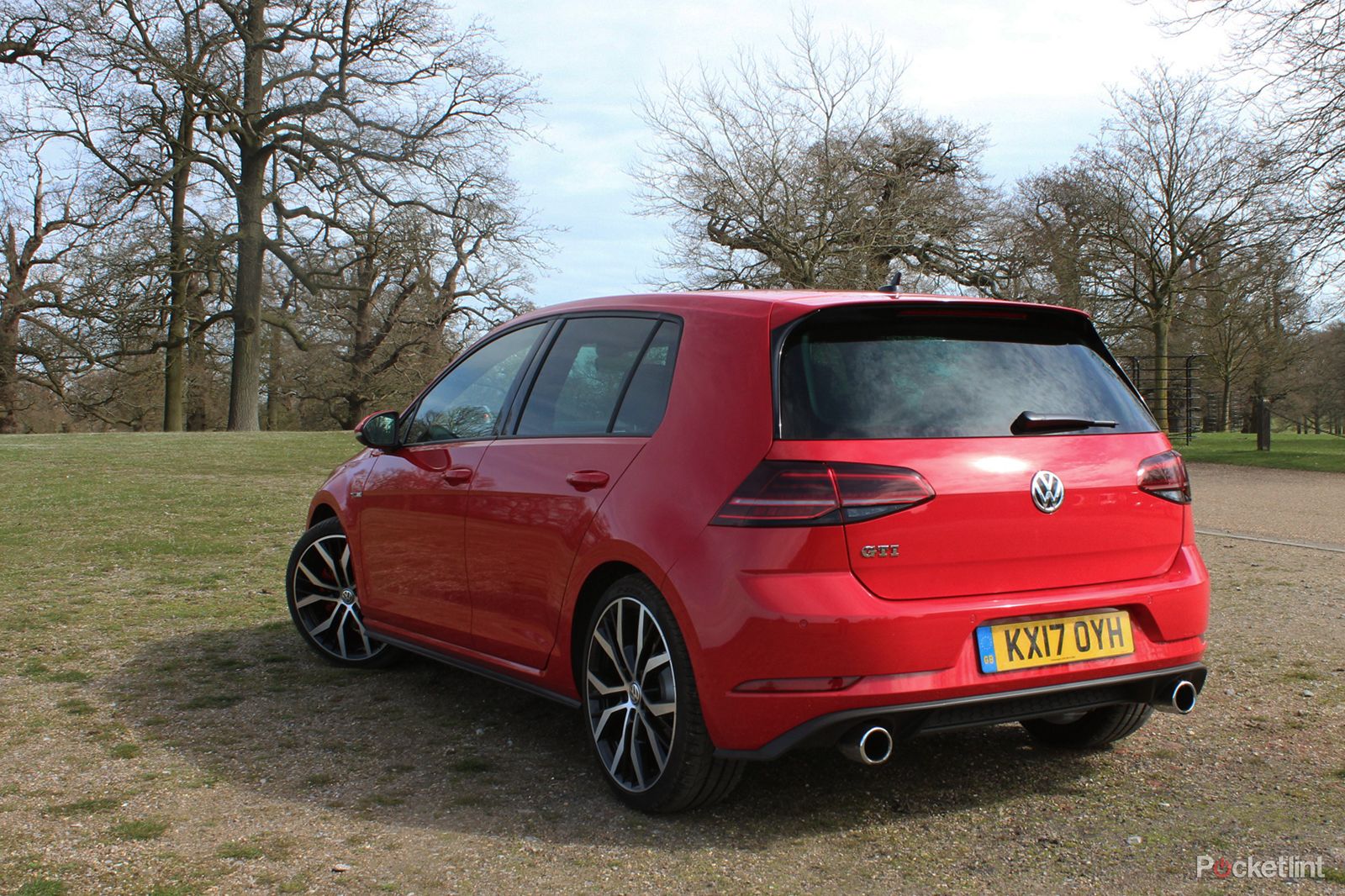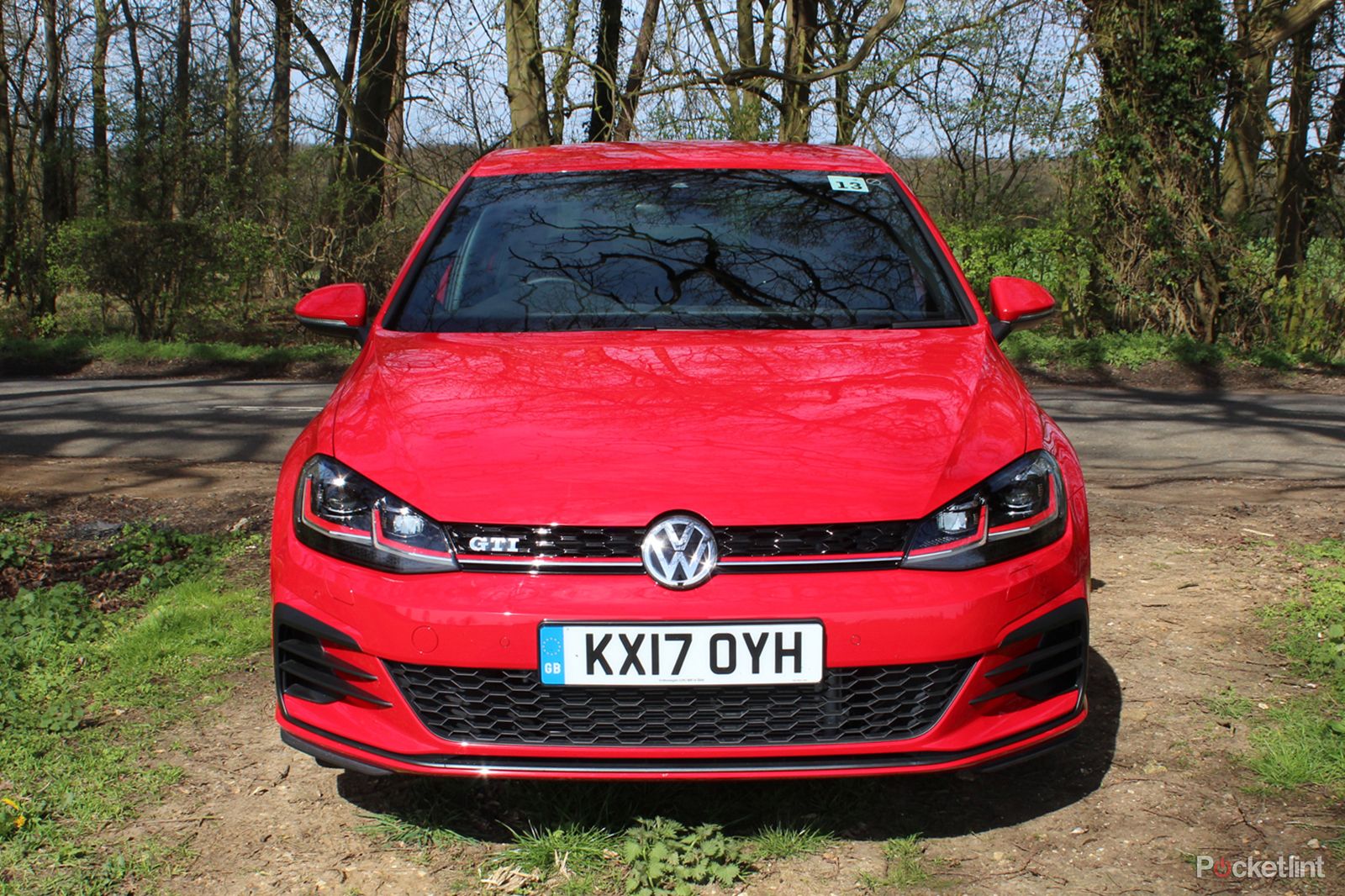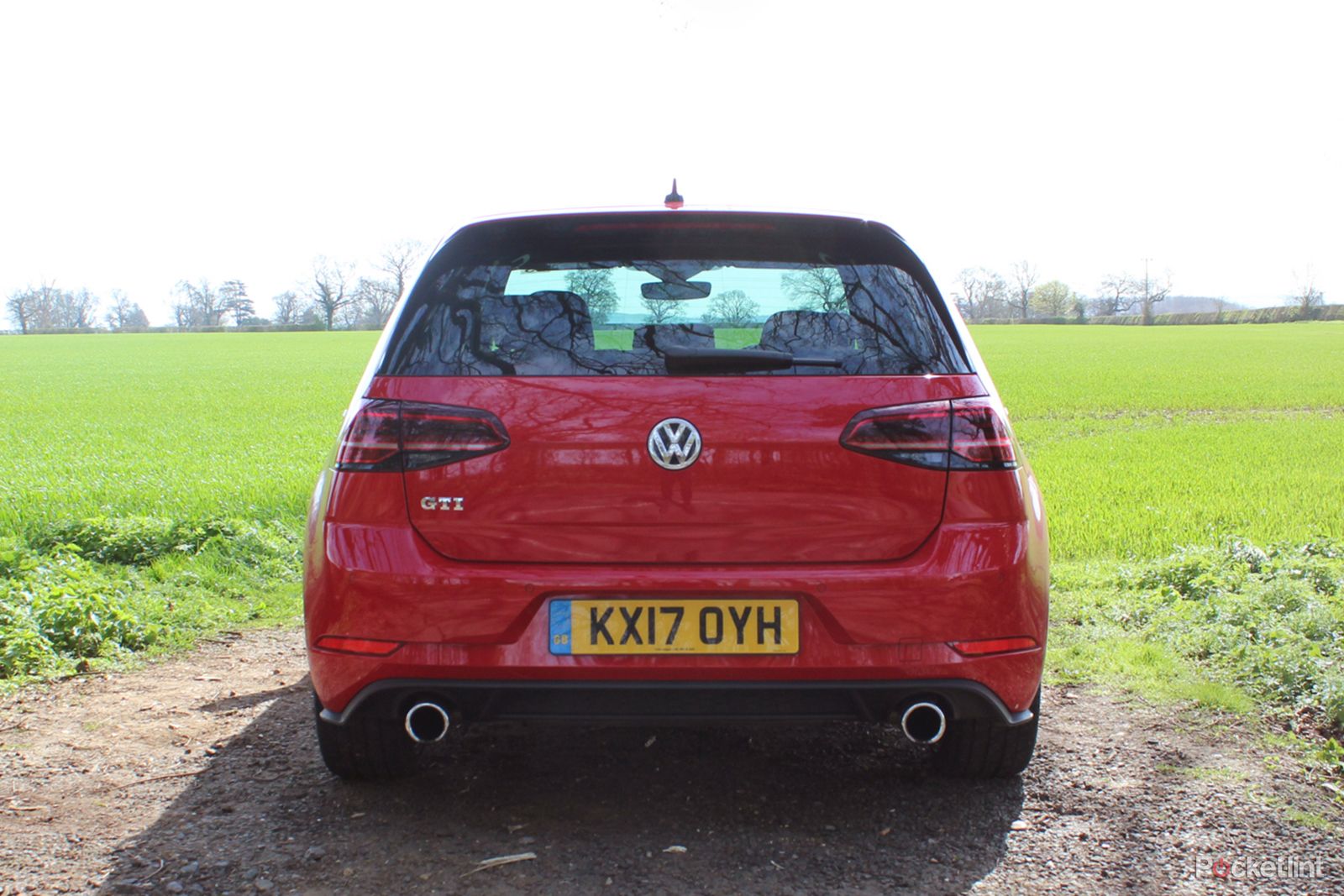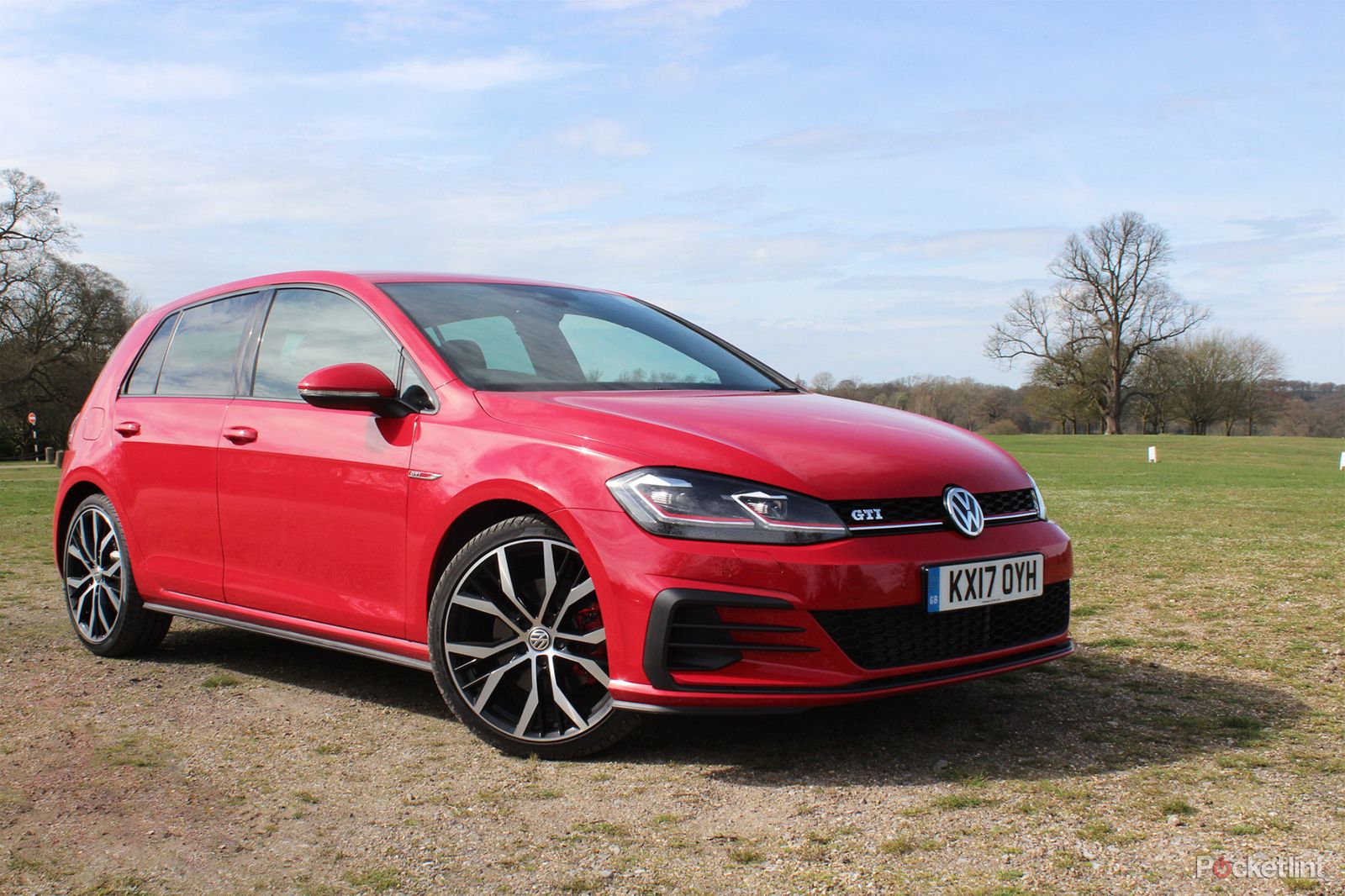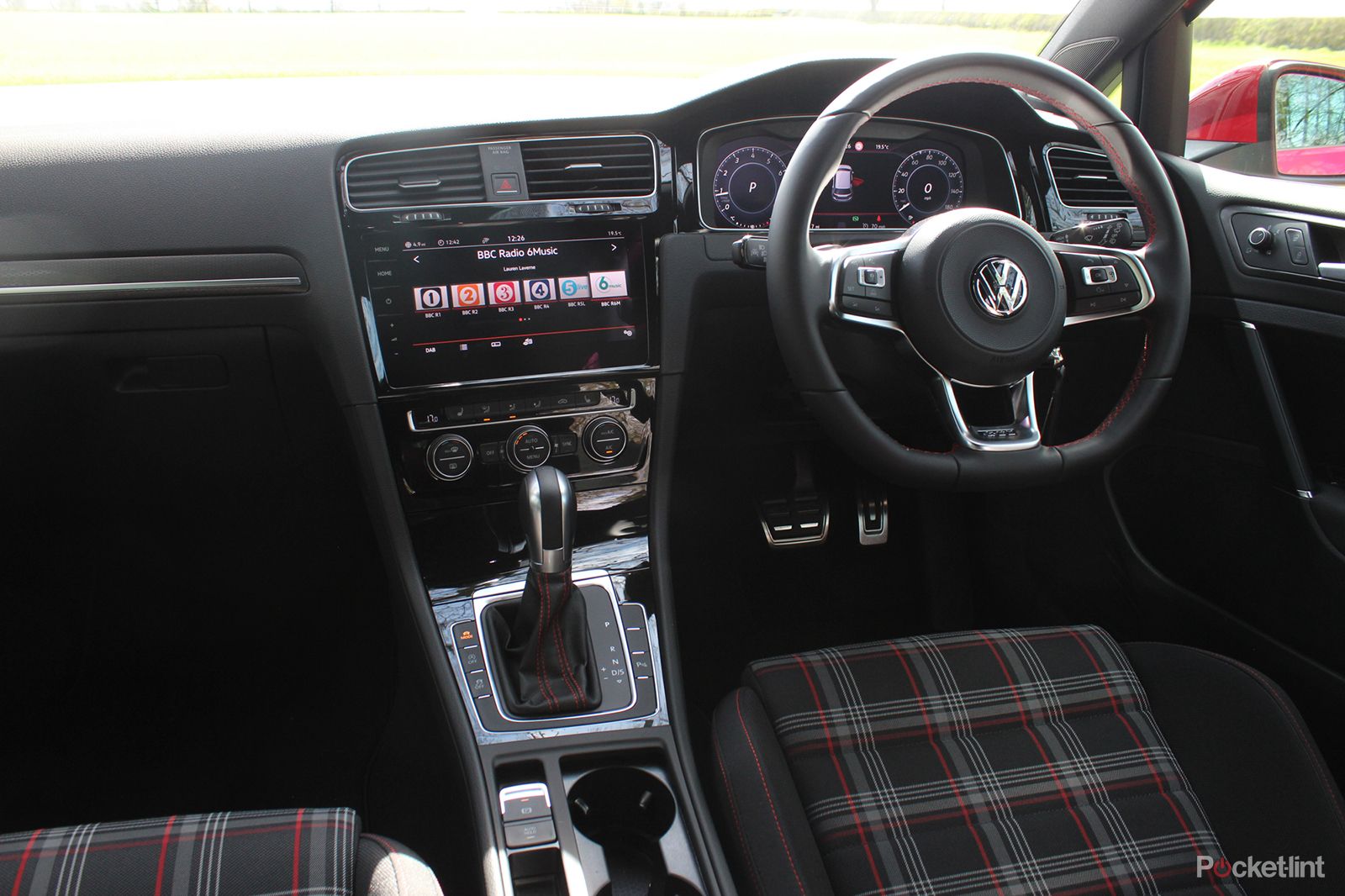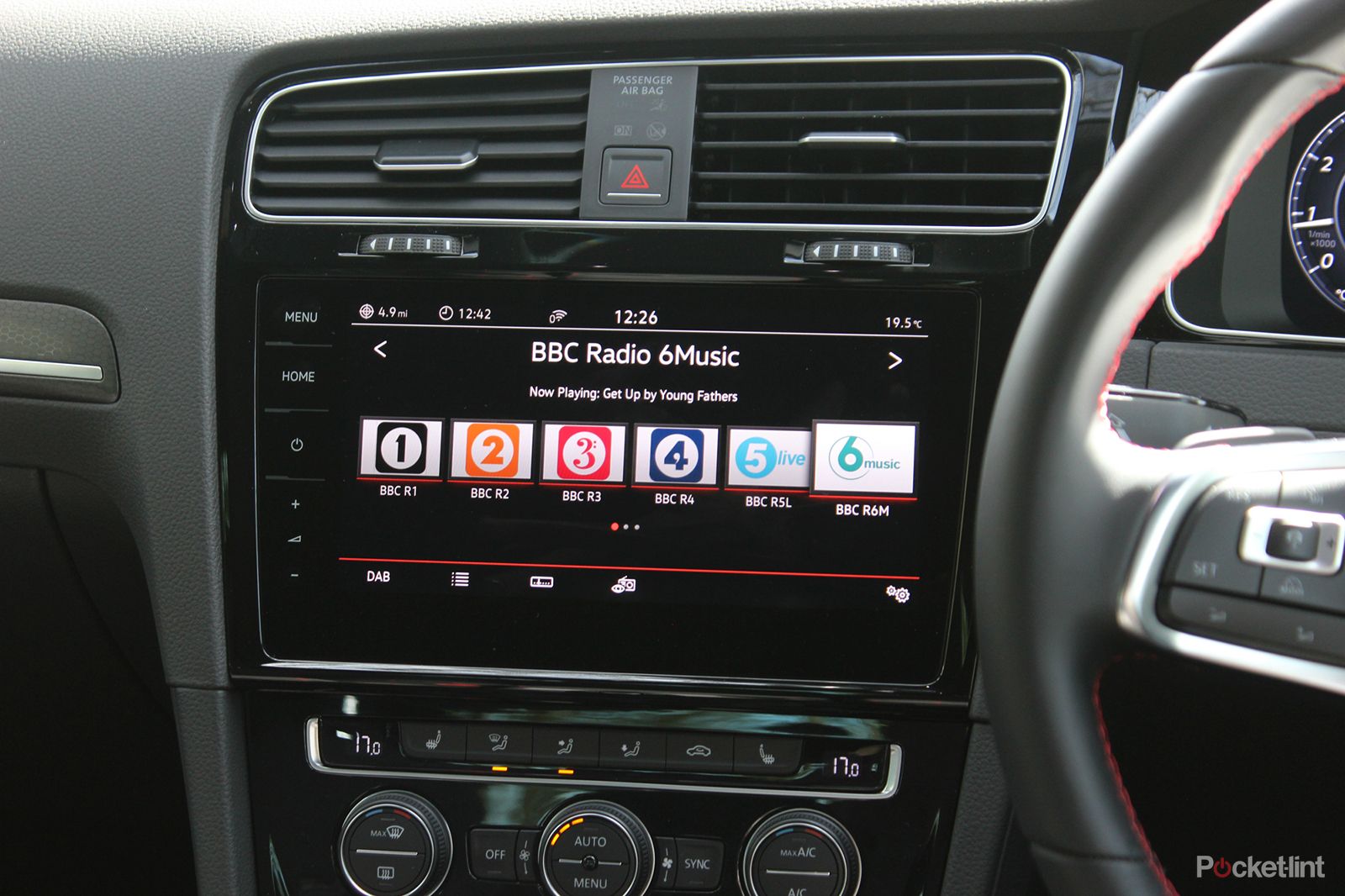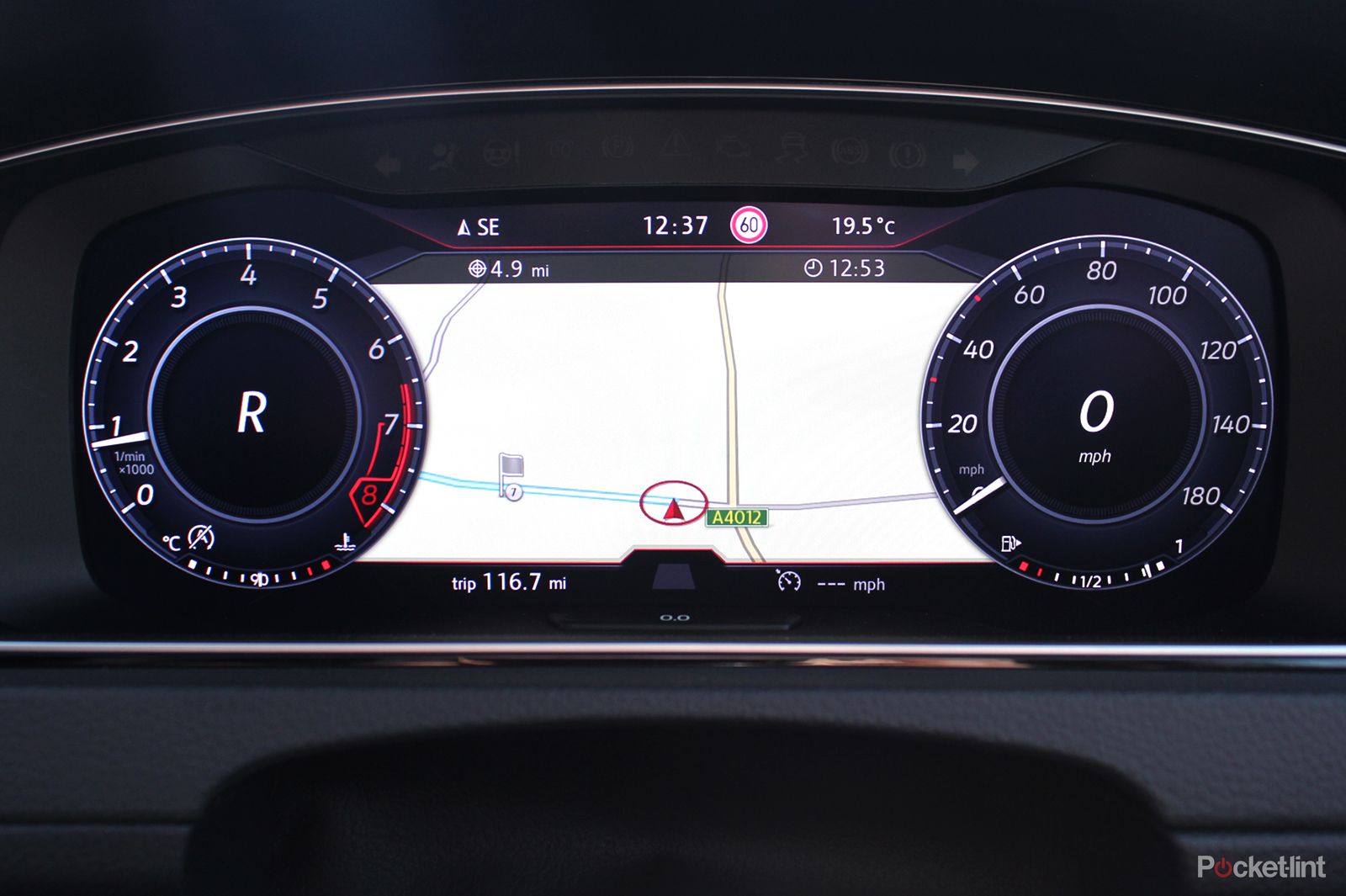Some cars are considered as class benchmarks. The Volkswagen Golf GTI is one such car. And with the German firm having just refreshed its best-selling small hatchback (see our regular, Mk 7.5 Golf TDi first drive) we took the opportunity to jump into the even hotter GTI, to see whether this Golf has benefitted from a raft of recent improvements.
Our quick take
It feels odd to write about a Golf GTI and spend half the text talking about in-car technology. But that is where the modern car industry is at — and both we and VW are acutely aware that it is in-car tech advances that is both pulling people into showrooms and (where it is badly implemented) also putting them off some brands. So it's an important factor.
Ignoring our initial tech quibbles, the Golf GTI represents an extremely complete, slick car that many of us would be delighted to see on our driveway every morning. We've deliberately not written about aspects like space and the way the car looks, as part of the GTI's appeal is that in this respect, it's just the same — and as well judged — as the regular Golf.
Overall, the new GTI drives as well, if not better, than it ever has. It retains one quality that continues to elude its competitors — even internal ones, like more powerful brother the R — in that it's a wonderfully "class-less" car. Its image is neither young nor old, poor nor rich. You could be seen it in, and anywhere, by anyone and in any context. It speaks not of excess nor does it shout that you're going to drive everywhere like a lout. That, to us, remains core to its appeal — it is the hot hatch that transcends boundaries.
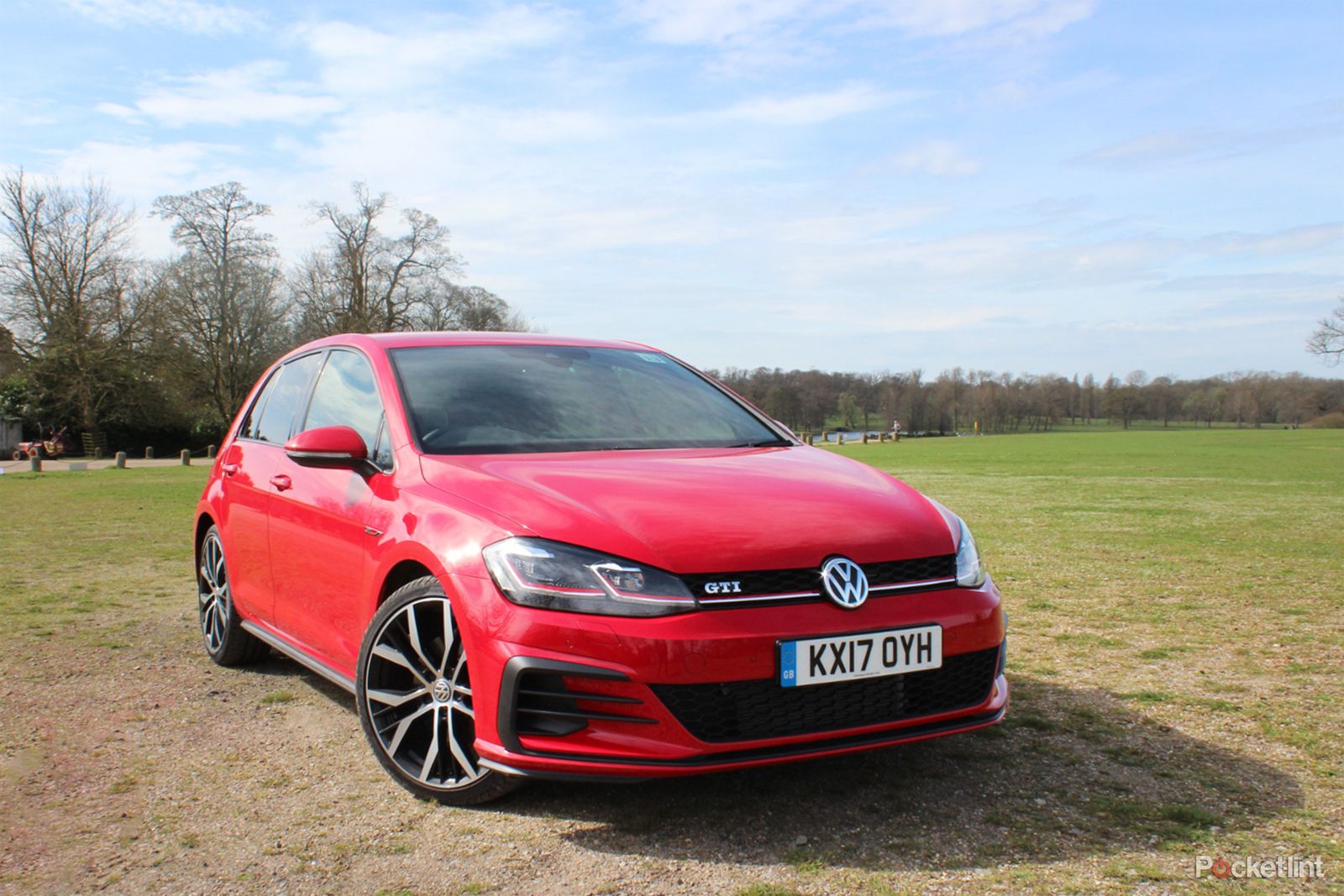
Volkswagen Golf GTI first drive
| FOR | AGAINST |
|---|---|
|
|
|
Volkswagen Golf GTI (2017) review: The "class-less" hot hatch
In 2017 the GTI finds itself in an interesting space. It might be a class benchmark, but there are signs that in the here and now it has become a bit of a forgotten car. That's because it's faced with both stiff internal competition — in the form of the GTD (little slower in the real-world but much more tax friendly) and the R (a lot faster but little more expensive) and a host of rivals who have all upped the ante in the horsepower stakes. GTI sales have slipped far back from their historic highs.
In this context, the refreshed GTI gains some extra firepower. As before there are two versions: the regular car, which we're testing here, whose power jumps from 220hp to 230hp as standard; and the performance pack car, whose power jumps from 230hp to 245hp. The latter version also gets a mechanical front differential as standard. So has the hot hatchback which defines its class now got what it takes to compete with the class best, in objective terms?
In a world of performance hatches which are routinely running 300hp plus, some of which can feel like they're trying to have a fight with you as you try to keep them on the road, the Golf GTI is a paragon of composition.
In isolation it feels quick, even in this standard 230hp form. The 2.0 TSi is a really nice engine to drive, which exhibits few vices. It's tractable from very low revs, pulls really hard between 2-5000rpm and unlike some turbos it doesn't feel strained or strangled over its last 1500rpm. It makes a nice burble too. We also know it's quite happy to deliver between 30-40mpg if you're gentle with it on a run, which considering the performance on offer is more than impressive.
Volkswagen Golf GTI (2017) review: To DSG, or not to DSG?
In the example we drove, the 2.0 petrol engine was hooked up to Volkswagen's 6-speed DSG automatic box. Like all DSGs this is a twin-clutch unit with the second clutch pre-selecting the next gear it thinks you'll want. That means when gear changes happen, they're done at lightning fast speed — and VW gives you small steering-wheel paddles as standard, so you're not left wanting for control.
It's slightly jerky when manoeuvring though, and we've always found VW's 7-speed DSG (which isn't fitted here because it can't handle the GTI's torque) that bit slicker. Our general view, therefore, is that the DSG does dial out a level of involvement which runs counter to the GTI's ethos. If your daily drive involves lots of traffic, go DSG, but if you want to have the most involving GTI then save the extra cash and stick with a manual gearbox.
Throughout our test drive, the 2.0 TSI engine continually impresses us. It's quiet at cruise, nicely rorty when pushed, flexible and free revving, egging you on when you're upping the pace. And if you never drove any of the competition or the performance pack version, then you'd probably be happy.
However, really push this GTI and you'll find the reason that VW offers a higher-spec model: the handling, when pushed, edges to understeer sooner than we'd like. And with the (admittedly great looking) optional 19-inch wheels, but no adjustable dampers fitted to this car, the ride is firm with a capital F.
Having driven a performance-pack GTI, that addition of the differential makes a difference to the handling — that Golf feels keener, it clings on longer in corners and allows you to get on the power out of corners far quicker than the regular car. So it's the one that spirited drivers will always want to have it. We'd seriously recommend sticking to the regular 18-inch wheels too, because the Golf just flows better with a road. Particularly a UK road which is littered with craters.
Volkswagen Golf GTI (2017) review: Red hot... but not an R
The picture in 2017 GTI world is pretty rosy then. The upgraded Golf nets slightly neater styling, more power as standard and you could happily plonk yourself in one for the next three or four years and be a very happy driver. Sense a "but" coming?
Well, it's unavoidable to mention: the more powerful Golf R. We had a brief drive in the new version of this at launch, and in manual gearbox form were reminded just what a lot of fun the most powerful Golf can be. And how shockingly powerful a performer it is. It packs an 80hp advantage over this GTI, and you can feel it. It also comes with four-wheel drive as standard. Sure, the R costs £4k extra over the £28,520 of a 5-door, manual GTI, but that won't amount to much extra a month in the context of a finance deal or lease. And so we would opt for the R over a GTI.
Volkswagen Golf GTI (2017) review: Tech upgrades?
There are features to tempt you into the new GTI. Foremost among them is the raft of on-board technology that wasn't in the previous version. The new GTI gets Volkswagen's "Active Info Display" as standard, a 12.3-inch TFT digital cluster that replaces the analogue dials. What's more, Apple CarPlay, Android Auto and MirrorLink are standard, as is an 8-inch centre screen display and sat nav (our review car's was upgraded to 9.2-inch and partly operable through gestures).
However, consider a car's cockpit interface as a whole, rather than individual parts, and we must admit that we struggled with this GTI setup. We've repeatedly praised Volkswagen for its easy-to-use interfaces, clear and logical labelling, fonts, graphics and language and held them up as the go-to people for in-car touchscreen standards. But in this form, when out on the road, we found the new GTI's setup both distracting and harder to jump in and use than any previous Volkswagen.
What's the issue? Well, the 9.2-inch screen relocates all the button shortcuts into a panel down the passenger side — these are digital buttons, as knobs and physical switches are banished altogether. So to adjust audio volume you've got to hit a digital switch which is a stretch away, rather than simply grabbing and twisting a knob. That's harder to do, and your eyes are off the road longer than they would be if you were in the old car.
What's more you lose the shortcuts of the smaller, 8-inch screen (nav, phone, media, radio, car) — instead getting a menu and a home button. The home screen presents a tiled, three panel setup which can be user configured to show the info you want. But how to make navigation (the dominant screen when we jumped in) switch places with radio channels (one of the small tiles) swap around so it's easier to change stations, was something we had to be shown how to do. Once you know (double tap on the tile to make it go big), it's fine. But should you need to be shown how to use a well-designed interface, or indeed get the manual out?
Similarly, the cluster — which isn't without visual appeal — is made harder to love partly because it can only do so much. You can change the display to have the centre section between speedo and revs show different info (sat nav map, driver assistance displays etc), and you can also configure the inner ring of speedo and rev to show info, such as digital speed, the eco-trainer, trip info. Once you've got it set to show the info you want, it's fine. But it's still visually busy — and there are so many options to choose from that it can be bewildering and frustrating to use on the move. What's more, the cluster is controlled by steering wheel buttons, which sit very close to one another and others which control functions such as cruise control, audio volume. Inherently, you end up jabbing at the wrong one from time to time.
The centre screen's gesture control is sensibly implemented — its only function is for swipe left or swipe right in certain menus (advance a track, skip to next radio station, move to next menu page). So it's very understandable as a concept, because you don't have to learn unusual movements. But sadly your hand needs to be in the right place to make it work — and when you're driving that happens perhaps one in every three times you try.
If our comments sound harsh, they need to be seen in the context of VW having set an extremely high bar for in-car tech standards up to this point. We still welcome many of the updates its brought in here, such as standard-fit Apple CarPlay and Android Auto connectivity. We just worry that the company has rushed to implement something flashier and more feature-loaded at the expense of ultimate usability.
When we come to review the GTI in full, after living with one, we'll see whether these tech issues are ironed out after a period of dedicated use, due to muscle memory. Some of the ideas seem great, so we don't want to dismiss them out of hand just yet. Perhaps it will genuinely represent progress when lived with over time.

